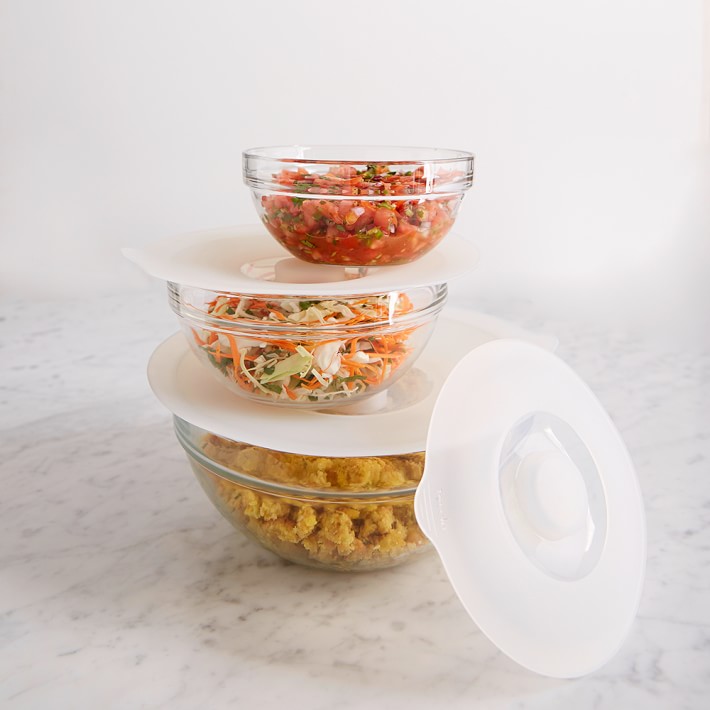Here Are 7 Brilliant Ways to Reduce Single-Use Plastic

By now, you’ve undoubtably seen that terrible video of the sea turtle with the plastic straw up its nose? (If you haven’t, and you want to Google it, just be warned that it’s absolutely heartbreaking.) While the War Against Plastic Straws is a valid fight worth fighting, it’s not only?iced latte sippers that need an overhaul. See, 18 billion pounds of plasticstraws, bottles, bags, and otherwisegets tossed into our oceans each year.
Even if you’re diligent about recycling, things can still end up where they’re not supposed to. And thanks to contaminants (like residual food or sticky labels), only nine percent of all plastic has ever actually been recycled. The best way to keep plastics out of our landfills and oceans? To not use them in the first place. It’s actually not all that hard to cut plastic out of your lifeand still live like a normal person.
Here are seven realistic and easy ways to phase out single-use plastic.
Take your food storage to the next level.
Plastic containers are ubiquitous, but how about taking your meal prep to the next level for trading up with glass mixing bowls (6) and food storage? These jars?(1) are ideal for transporting oatmeal or crudite and this glass container set?(4) has shapes and sizes for all types of meals, big and small.
 Swap plastic for metal straws.
Swap plastic for metal straws.
If you’re going to just do one of the things on this list, it should be this one. (Remember the sea turtle?!) Half a billion straws are used and discarded every. single. day. While more and more establishments are banning straws, there are also a growing number of reusable straws on the market. We carry these metal ones?(2), which come with a cleaning brush, but you can also find other options made of silicone, paper, bamboo, or even glass.
Skip the bottled water (and drinks).
Humans buy about one million plastic bottles every minute. Instead of buying a bottle of water the next time you’re out, fill up a reusable water bottle. Keep one in your purse (for on-the-go drinking) and consider a second one for your desk at work to cut back on plastic cups.
These tough tumblers?(3) available in a variety of colors and sizes aren’t only made for coffee. Use them for smoothies, soups, wine, and other beverages.
Make your own sparkling water.
Prefer bubbles over flat? Get a sparkling water maker (5). Sure, there’s still a plastic bottle involved with these countertop devices, but you’ll use them over and over again.
Use?silicone lids instead of plastic wrap.
The problem with plastic wrap is two-fold. For one: It’s bad for the environment. And secondly, no matter how carefully you pull off a piece the first time, it almost always gets all stuck together and you have to try a second time. That’s doubly wasteful! Instead, try silicone lids like these. They create an air-tight seal with any bowl and allow you to stack things on top in the fridge. Plastic wrap can’t do either of those things. Just saying.
Buy in bulk.
We’re not just talking about the bulk aisle for almonds, here. (Although this is a great way to shopas long as you bring reusable baggies for your bounties.) This also includes, say, buying a larger container of yogurt and then doling out portions into smaller glass containers when you meal prep for the week. You know, versus buying many little yogurt containers.
And an assortment of reusable bags.
There are so many types of plastic bags that really add up and take a toll on the environment.? According to some estimates, Americans throw away 100 billion plastic bags annually. Even if you bring your own cloth tote bags along to the grocery store, there are also those plastic bags on offer in the produce department and zip-top baggies for your pretzels when you’re packing lunch.
Instead of putting a single bunch of cilantro into a plastic bag on your way to the checkout, reach for the roll of paper towels that’s probably also nearby. Or better yet, bring your own reusable produce bags. (We find muslin drawstring bags are best!) And when you’re packing lunch or meal prepping, use silicone baggies or glass containers.


